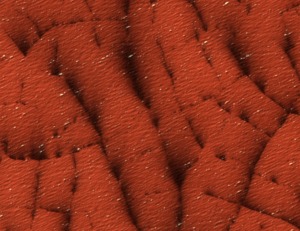You may or may not have already come across Planet Four the latest member of the Zooniverse family, our Martian project, and let’s face it Mars is hot right now. Since Curiosity Rover touched down on the surface in August of last year, after surviving Seven Minutes of Terror, through which much of the world waited with baited breath, we’ve all gone a little Mars crazy. Or is that just Zooniverse HQ?
There are a range of Mars related teaching resources out there and NASA’s wavelength is a great way to access a collection from across multiple NASA missons. However, if you’d like your students to do some real exploring, look at real data, while making a contribution to scientific research, how about letting them loose on Planet Four?
Personally I’ve dreamed of visting Mars for as long as I can remember, but in my imagination Mars was always a dusty, rocky outpost. Planet Four has totally revolutionised my vision of our nearest neighbour, the diversity of the landscape is breathtaking, inspiring and totally unexpected.
These spectacular images of the southern Martian pole were taken by the Mars Reconnaissance Orbiter (MRO) using the High Resolution Imaging Science Experiment (HiRISE) camera and the NASA Jet Propulsion Laboratory has a great collection of education resources relating to this mission.
The task that volunteers are asked to undertake on Planet Four is fairly easy, it’s simply a case of marking fan and blotch features on that appear on the frozen carbon dioxide ice during the winter months. The size and direction of the fans are a great indication of the wind speed and direction, so measuring these will help planetary scientists better understand the climate on Mars. For more details, check out the Planet Four “About” page or the project Blog which has some great postings from the science team.
So I do wonder, would this be an interesting project to use as part of a geography lesson, perhaps to discuss some of the processes that might have occurred to create some of the features we see? Or maybe a physics lesson, where students measure the length of the fan features and discuss what wind speeds would be required to send the material that far across the surface. What assumptions would you need to make and are there any experiments you could design to recreate the patterns?
If you’ve got any idea’s please do share them here or on ZooTeach!





Huh, did not see a notification sent out for beta testers. Did they just jump right into the main release?
This project got built super fast, so as to be ready in time for BBC Stargazing earlier this year. I’m don’t recall the details, but I’m not sure there as time for much beta testing!